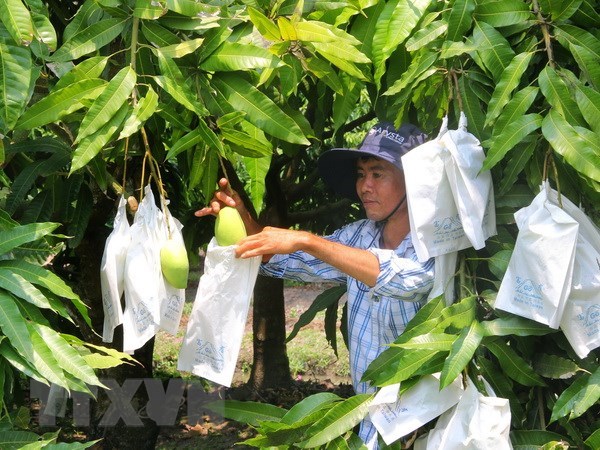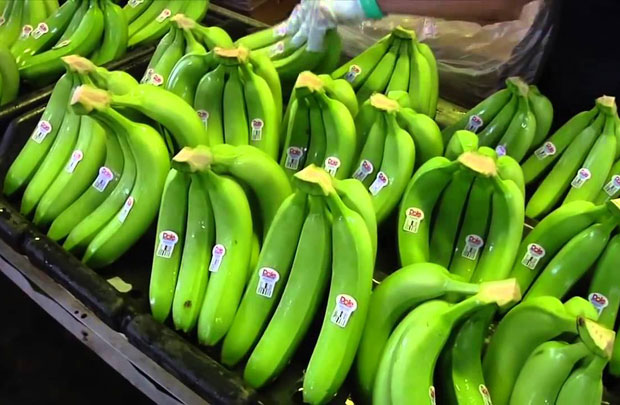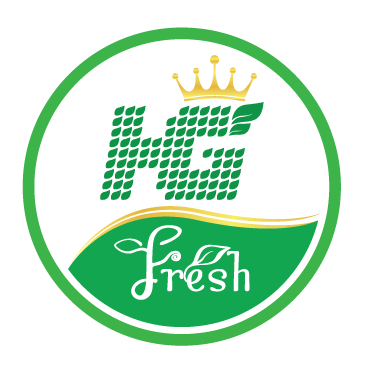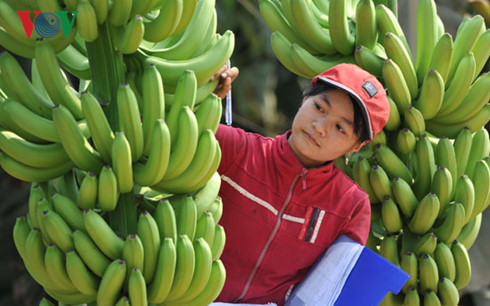Thanks to its easy-to-grow characteristics and high consumption, Vietnam's clean bananas become a potential export item in many countries. This is a great advantage for Vietnam's economic development.
Area of clean banana cultivation in Vietnam today
Vietnam has a tropical climate, is one of the countries of banana trees with many different varieties.
Banana area accounts for 19% of the total area of fruit trees, with an output of 1.4 million tons.
Currently, Vietnam has about 150,000 hectares of bananas for farm-scale fruit production.

In the Central and Southern regions, there are many localities with large banana areas such as Dong Nai, Soc Trang, Ca Mau, Thanh Hoa, Quang Tri, Khanh Hoa...with banana areas from 3,000 to 8,000ha;
In the North, there are Hanoi 3,294 ha, Phu Tho, Hung Yen ...
The opportunity to export Vietnam's clean bananas is expanding
Vietnam's banana exports to China reached 348,261 tons, an increase of 145.08% over the same period in 2020 and an increase of 87.14% compared to the whole of 2020 (in 2020, Vietnam's banana exports to China reached 339,673 ton).
Besides, thanks to the improvement of quality, Vietnamese bananas are penetrating strongly into two fastidious markets with great potential in East Asia, Japan and Korea.
In the first 3 months of 2022, Vietnam supplied the Japanese market with more than 1,500 tons of bananas, worth 166 million yen (equivalent to 1.3 million USD), up 38.5% in volume and 30.2% in volume. value compared to the same period in 2021.

Banana production according to a clean process for sustainable export
In order to have stable output, we must have a stable export source, but first of all, we need to have a standard and clean process to ensure strict criteria when exporting clean bananas.
Prepare land to plant clean bananas in Vietnam
Depending on the high and low terrain, it may or may not go up. Can be planted at the beginning or middle of the dry season to give the soil time to dry, when it rains, the soil will loosen and start planting.
Bananas are planted in 2 rows in the shape of crocodile fangs with a width of about 5m. If planted in 3 alternating rows, the surface is about 7m wide.
Planting season
It is advisable to plant bananas at the beginning of the rainy season so that the tree has enough water and saves watering effort.
Should be planted in the months with low temperature, high humidity so that the fake stem is less dehydrated.
Choose a seedling
Using seedlings produced by tissue culture method for planting for high survival rate; disease free, higher yield and quality.
Planting distance and density
Planting distance between rows is usually about 2.0 - 2.5m and the average distance between trees is about 2m.
Planting method
Dig a hole 50 cm deep and 40 - 50 cm wide, priming for each hole 10 - 15 kg organic fertilizer + 200gr Wokozim + 100g NPK 18-10-10 + TE fertilizer.
Mix fertilizer with soil for about half of the hole, remove the nylon pot, place the banana seedlings in the middle of the planting hole so that the potting surface is level with the ground, fill the hole with soil, fill the hole just past the neck of the banana stump, cover the soil around the base. , drenched.
Fertilize clean bananas in Vietnam
Organic fertilizers: including cattle and poultry manure, ash, decayed rice husks, river mud and pond mud, containing high nutrients.
On average, a banana tree needs about 10-15 kg of organic fertilizer/year + 300g Wokozim, applied at the beginning of the annual rainy season, hoes around the base to form a trench 1.5 - 1.7m from the base, the fertilizer is evenly distributed. inside the groove.
Inorganic manure
3 – 3.5 months: Amount of fertilizer/dust: Urea: 0.1 kg, Fused phosphorus: 0.5 kg, Potassium chloride: 0.5 kg.
7-8 months: Amount of fertilizer/dust: Urea: 0.2 kg, Fused phosphorus: 0.5 kg, Potassium chloride: 0.5 kg.
How to fertilize?
Dig 4 holes around the root, 10 - 15 cm deep, the first time is 40 - 50cm from the root, the second time is 50 - 70cm from the root, the third time is 1m from the root, the 4th time is 1.5 - 1.7m from the root, fertilize hole and backfill with soil.
Amount of fertilizer 1 dust in the following years:
Amount of fertilizer/dust/year: Urea: 0.3 kg, Fused phosphorus: 1 kg, Potassium chloride: 1kg.
How to fertilize?
If watering, divide the above fertilizer evenly into 3 times: 1st time after harvest, 2nd time after 2-3 months and 3rd time after 2-3 months. In case there is no watering condition, the amount of fertilizer is divided equally between 2 times of application, at the beginning and the end of the rainy season.
Planting miles
After planting about 30 days, if the tree is dead or poorly developed, it must be planted with seedlings with a height of 20 - 30 cm.
Pruning seedlings
When the tree begins to produce seedlings, proceed to prune the seedlings (can be used for replanting or discarded).
Check once a month to promptly prune seedlings, avoid competition for nutrients, light, and reduce pests.
Prune out weak trees, close together, each bush should only have 3-4 growing trees.
Pests and diseases
Banana trees are often damaged by leaf-eating pests such as grasshoppers, beetles, root-damaging nematodes, some aphids sucking sap and young fruit.
Treat with lime or insecticides such as (Pesticide: Tricel 48EC, Basudin, Fungicides: Sulfex 80WG, boocdo, Zinep, Aliet, ...) after the plants have bloomed.
Cover with white nylon to avoid browning.
We hope that our above article has enough information for your reference. For any questions, please contact hotline 1900 252517 or email: contact.hgfresh@gmail.com

